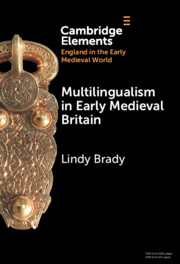Element contents
Multilingualism in Early Medieval Britain
Published online by Cambridge University Press: 19 September 2023
Summary
Information
- Type
- Element
- Information
- Online ISBN: 9781009275811Publisher: Cambridge University PressPrint publication: 12 October 2023
Bibliography
Primary Sources
Secondary Sources
Accessibility standard: Unknown
Why this information is here
This section outlines the accessibility features of this content - including support for screen readers, full keyboard navigation and high-contrast display options. This may not be relevant for you.Accessibility Information
- 9
- Cited by
